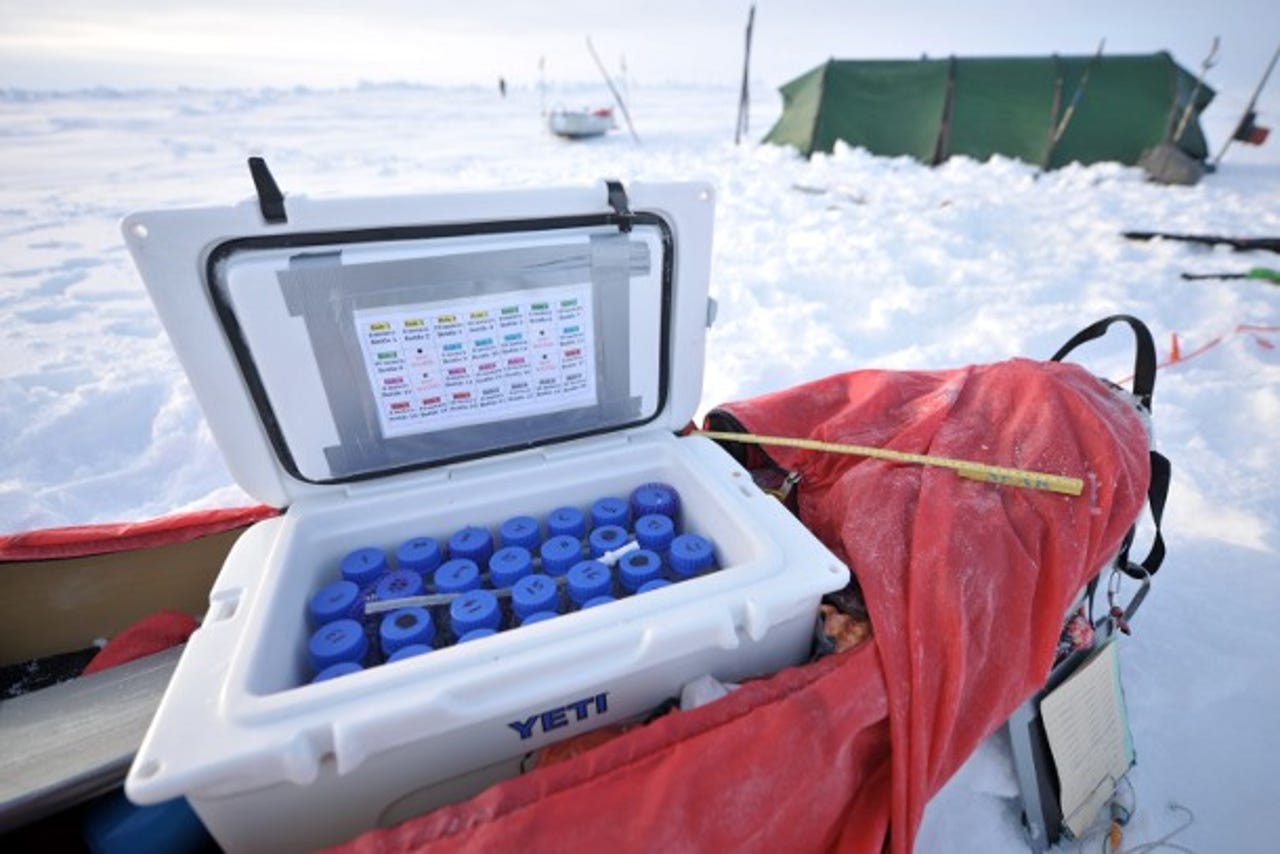Photos: Keeping your cool at -40C: Inside Arctic researchers' tech arsenal

Satellite comms and a Yeti box: The tools behind Catlin Arctic Survey team's success
The Catlin Arctic Survey is currently out in the Canadian high Arctic, studying changes in ocean acidity and ice thickness in the Arctic Ocean.
The project, which aims to discover how greenhouse gases could affect the marine life of the Arctic Ocean, consists of an temporary camp and a three-person explorer team which roams the floating sea ice in the direction of the North Pole.
The survey team have been on the ice since early March as part of the survey's second expedition, following a trip in early 2009.
The team relies heavily on technology to carry out its work and communicate with the team back in the UK, much of which the explorer team transports on sledges dragged across the ice.
Photo credit: Martin Hartley
Shown above is the communications equipment which the explorer team use to communicate with colleagues in the UK.
The bespoke kit that the team carry with them is a smaller and lighter version of the Viper technology used in the 2009 expedition and is called Viperson.
Viperson is able to operate in the Arctic's -40C temperatures as it can heat itself by up to 20C.
It can also switch itself off automatically when not in use in order to save energy and features large buttons so members of the team can use it while wearing gloves.
Viperson uses two satellite modems to access the Iridium satellite network to send high-resolution still and web-quality video images back to the UK to show how the expedition is progressing.
As satellite signal can be patchy in the Arctic, Viperson is able to pause an upload if the signal is dropped and resume from the same point when it returns, saving time accessing the satellite network.
The explorer team also carry Solara field-tracking beacons with them which communicate with the Iridium satellite network every hour to keep the UK team updated about their whereabouts in real-time.
Photo credit: Martin Hartley

The explorer team take water samples from various depths which are then sent back to the UK for analysis.
By measuring the acidity of the Arctic sea water, scientists can work out how much CO2 is being absorbed by the ocean. The world's oceans absorb around 25 per cent of the man-made carbon dioxide so increasing acidity levels in the water will show if CO2 levels are rising and how the oceans are responding. CO2 absorption is greater in colder water, hence the value of taking samples in the Arctic.
The samples are collected by drilling through the ice and then collecting the water at various depths below.
A special container - or 'Yeti box' - has been developed by the Catlin Arctic Survey team to prevent water samples from instantly freezing in temperatures as low as -40C. If the samples freeze, their chemical composition changes, rendering them useless for study.
The container includes an aluminium heating plate which keeps the inside of the box at around 15C. The Yeti box also uses an extremely lightweight insulation material called Aerogel (also used by Nasa in its space suits) as well as bottles of hot water to keep the box's temperature up, and extend its battery life.
The Viperson communications device logs the temperature within the Yeti box, which will provide data to help with the development of Yeti box for the next expedition.
Photo credit: Martin Hartley
Pictured above is a member of the team using a conductivity, temperature and depth (CTD) profiler to gather data from water at the surface and also at a depth of 10 metres.
The conductivity measurement taken by the device determines the salinity of the water, which is used to work out what sort of organisms are able to exist in it.
Photo credit: Martin Hartley
The explorer team receives supplies every two weeks by plane.
As well as taking delivery of food and fuel supplies, the team offloads the water samples to be returned to the UK. The plane also holds a computer, which the data from the CTD profiler is downloaded to.
Photo credit: Martin Hartley
The expedition's base on the ice, shown above, is home to around 10 scientists during the eight-week duration of the survey.
The base is heated and has a power supply which can be used to run computer equipment.
The ice base uses an off-the-shelf communications system called OpenPort which, like the Viperson system, operates via the Iridium satellite network. As the equipment doesn't need to be moved anywhere once it's been set up, it's much heavier than the Viperson kit used by the explorer team.
The survey team will continue their work until the ice sheets break up in May and the data gathered will be analysed by the survey's scientific partners - including the University of Cambridge, Plymouth Marine Laboratory, Laboratoire d'Océanographie de Villefranche and the National Centre for Earth Observation - over the following three months.
Photo credit: Martin Hartley